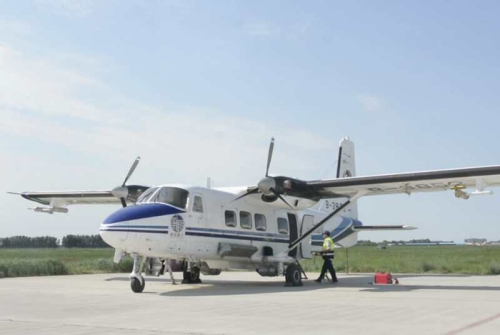Laboratory of Cloud-Precipitation Physics and Severe Storms
Cloud-precipitation physics and severe storms have always been important research topics for IAP. Laboratory of Cloud-Precipitation Physics and Severe Storms (LACS) is the only one involved in wide research areas concerning clouds and storms in China. LACS mainly focuses on cloud microphysics, small- and mesoscale convective systems, and model developments. We have a long history of studying cloud physics (since the early 1950s), and then two laboratories of cloud-precipitation physics and mesoscale severe storms were established one after the other from the 1960s to the 1970s. GU Zhenchao, who was the first director of IAP and a PhD student of Professor Rossby, pioneered cloud microphysics studies and artificial weather modification in China. In the 1960s, his team proposed that turbulence may play an important role in rain embryo formation. Almost simultaneously, Tao Shiyan, who was the founder of severe storm studies in China, promoted storm research and forecasts in China. LACS became a member of the key laboratories of the Chinese Academy of Sciences in 2013.
LACS has two research directions: (i) cloud-precipitation physics and artificial weather modification; and (ii) severe storms and mesoscale and microscale systems. Based on these two research directions, LACS has the following five main research areas:
(1) The macro- and micro-processes of cloud and precipitation
With state-of-the-art observation equipment, including airplanes, balloons and radars, launch comprehensive observations of cumulus clouds and stratiform clouds; study the relationships between the dynamic and microphysical processes for different clouds and their precipitation mechanisms; establish new cloud parameterization schemes to accurately describe the growth of drops and ice particles; develop high-resolution Lagrangian and Eulerian bin models and multiple-parameter bulk models.
(2) Theories and methods for artificial weather modification
Focus on new theories and methods for artificial rain enhancement and hailstorm prevention with comprehensive observation equipments and the numerical models; identify the most favorable place, time, and quantity of seeding material for various cloud modifications; provide scientific guidance on artificial rain enhancement for governments.
(3) Studies on the mechanisms of severe storms and meso- and microscale systems
Carry out studies on meso- and microscale disastrous weather systems frequently occurring in China, including field observations, the formation and development mechanisms of severe convection systems, such as typhoons, torrential rainfall and heavy snowfall; summarize conceptual models of various meso- and microscale disastrous weather systems; carry out studies on forecasting approaches and studies on the predictability of these systems.
(4) Development of meso- and microscale models and studies on prediction approaches of severe storms and meso- and microsystems
Develop and improve numerical models of severe storms and meso- and microsystems; carry out numerical simulation and observational experiments of severe storms and meso- and microsystems; promote technology to integrate and assimilate unconventional observations; develop theories and approaches for short-term forecasting and nowcasting to promote their capability in predicting meso- and microscale disastrous weather.
(5) Research on the detection technology of cloud-precipitation physics and severe storms
Develop detection technology for cloud-precipitation physics and severe storms, including airborne-cloud microphysics detection equipment, specially manufactured measuring devices on the ground and multi-parameter radar; establish a comprehensive research system based on theoretical exploration, design and technology.
The laboratory has cooperated extensively with international research institutes and professional affiliations, such as NSSL/NOAA. A strategic partnership with CIMMS, co-led by OU/NOAA, was established. An annual visiting system with the Institute of Atmospheric Sciences of Russia was put into effect. In-depth cooperation with MRI JMA has lasted for many years. Academic exchange with the Institute of Meteorological Sciences of South Korea is held annually.
Since the establishment of LACS, its main research team, in cooperation with other related institutes and operational centers both in China and overseas, has carried out extensive research on various scientific topics and R2O (research to operation), in the areas of cloud-precipitation physics and weather modification, as well as severe storms. A series of innovative achievements have been obtained. A total of 294 research papers, including 157 in SCI journals, 4 monographs and 14 patents, as well as 23 software copyrights, were published or approved from 2014 to 2018.
Director: SUN Jiming
Chinese Version: http:/lacs.iap.ac.cn/
English Version: http://english.iap.cas.cn/rh/rd/

